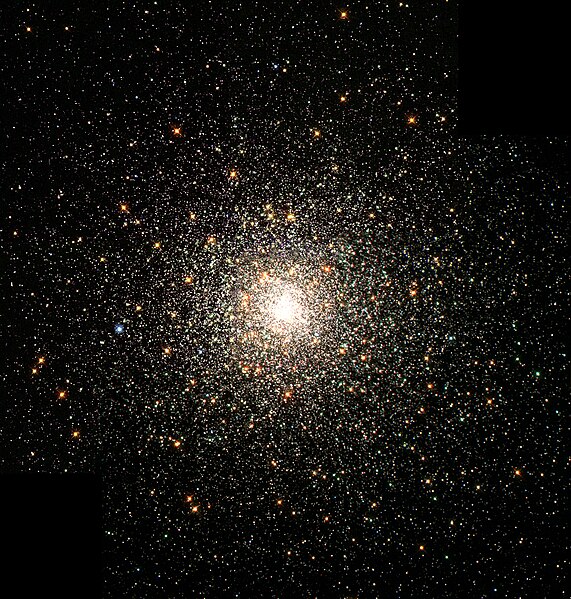Star clusters are interesting, beautiful, and important to astronomy. They are interesting, because their various shapes make one wonder how these groups of stars came about. They are beautiful, because the bright points of light we call stars are doubly lovely when they are packed close together. They are important to astronomy, because their alikeness allows for more accurate measurements of the universe.
Star clusters are multiple star systems. Unlike smaller groups of stars, clusters refer to hundreds and even thousands of stars that are gravitationally connected. They move through space in a group. They are common in our universe, and they group around the galactic center. Two types of clusters have become easy targets for the amateur observer—open clusters and globular clusters:
The stars of open clusters are young and about the same age. They move together in the same direction through space even when not gravitationally bound. Confined to the galactic plane, they lie in spiral arms of our galaxy. http://messier.seds.org/open.html
Globular clusters are gravitationally bound and lie near the center of the galaxy. The stars of these clusters are almost as old as the universe, and they are packed tight into an area as small as the solar system. http://ned.ipac.caltech.edu/level5/ESSAYS/Cudworth/cudworth.html
Since all the stars of clusters were born at about the same time, stellar evolution theories depend on them. They are essential to determining the distance scale of the universe. Those clusters that are close enough to us to allow the use of parallax become the standard for stars farther out in space. Once we know the real distance of a star through parallax, we can compare chemical compositions and luminosity of these stars with those farther away and plot them on a graph. http://abyss.uoregon.edu/~js/glossary/parallax.html
This graph, called the Hertzprung-Russel Diagram, allows astronomers to plot stars too far away for true parallax measurements to work. The known distances plotted on the diagram forms the main sequence. Stars of unknown distance can then be fitted into the main sequence using their actual luminosity. This is called main-sequence fitting.

No comments:
Post a Comment